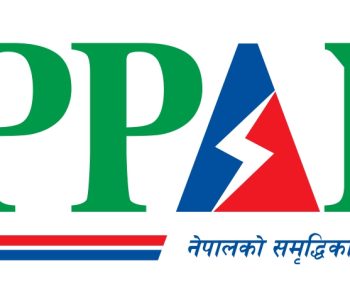Rising non-banking assets: A growing challenge for Nepal’s banking sector

KATHMANDU: Nepal’s banking sector is grappling with a concerning surge in non-banking assets, a consequence of increasing loan defaults. Borrowers failing to repay their debts force banks to auction off collateral, which, if unsold, becomes the property of the bank. This trend, coupled with the sluggish economic environment, has led to an accumulation of non-banking assets, raising questions about the effectiveness of current policies and financial management strategies.
As of Mid-November in the ongoing FY 2024/25, Nepal’s banking system reported NPR 32.33 billion in non-banking assets, marking a staggering 77.49% increase compared to NPR 18.21 billion in the same period last year. While the rise highlights systemic issues in loan recovery, it also reflects broader economic challenges that have hampered asset liquidation.
Bankers attribute this surge to unsold collateral from defaults, which they are compelled to take over due to the lack of buyers. This issue has transformed banks into reluctant holders of assets, shifting their focus away from core banking operations.
Non-Banking Assets: A Sector-Wide Concern
Nepal Rastra Bank’s data reveals a widespread increase in non-banking assets across financial institutions. Everest Bank recorded the highest growth, with its non-banking assets surging by 753.33%, reaching NPR 510.12 million. Similarly, Nepal SBI Bank and Agricultural Development Bank reported increases of 435.82% and 424.92%, respectively, with Himalayan Bank witnessing a 339.20% rise to NPR 3.63 billion.
Other major banks, including Sanima Bank, Citizens Bank, and Global IME Bank, also recorded significant increases. These institutions now face the dual burden of managing these assets while striving to maintain profitability and liquidity.
Conversely, some banks, such as Standard Chartered Bank, reported stable non-banking assets, while Prime Bank saw a marginal decline of 5.74%, suggesting that individual bank strategies and circumstances play a role in asset management outcomes.
Systemic Challenges in Asset Liquidation
The rise in non-banking assets is tied to Nepal’s broader economic slowdown. Sectors such as real estate and infrastructure, often tied to large collateral-based loans, have suffered from decreased demand and investment. This economic stagnation has made it increasingly difficult for banks to find buyers for auctioned assets.
Bankers have expressed concerns about the long-term implications of this trend. Upendra Paudyal, President of the Confederation of Banks and Financial Institutions Nepal (CBFIN), warned that the continuous accumulation of non-banking assets poses significant risks to the sector.
“The banking sector is known for its transparency, dynamism, and governance. However, the growing burden of non-performing loans and non-banking assets is making it increasingly vulnerable,” said Paudyal. He urged stakeholders to focus on systemic solutions, including stricter enforcement of repayment policies and innovative financial management strategies.
A Call for Policy Interventions
Dr. Dilliram Pokharel, Assistant Spokesperson for Nepal Rastra Bank, acknowledged the growing challenge and revealed plans to establish an Asset Management Company (AMC) to handle such assets. However, the proposal remains in its early stages, with no concrete steps toward implementation.
“Loan defaults impact the entire economic system, and some issues are beyond immediate control. The central bank does not view the rise in non-banking assets favorably, but addressing this requires time and an improved economic environment,” said Dr. Pokharel.
Experts argue that while an AMC could provide temporary relief by centralizing asset management, broader economic reforms are essential to address the root causes of loan defaults. These include fostering economic growth, improving the investment climate, and creating policies that encourage responsible lending and borrowing.
Balancing Growth and Stability
The growing burden of non-banking assets reflects a delicate balancing act for Nepal’s banking sector. On one hand, banks must ensure liquidity and profitability to sustain operations; on the other, they are compelled to manage assets that do not generate income.
This dual challenge is compounded by regulatory requirements, which limit banks’ flexibility in managing non-performing loans. Some bankers argue for policy reforms that would allow them to liquidate assets more efficiently or recover debts through alternative means.
“The current system imposes significant constraints on banks, making it difficult to address the issue of non-banking assets proactively,” said a senior banker on condition of anonymity. “We need a more dynamic approach that considers the economic realities and provides banks with the tools to manage these challenges effectively.”
Addressing the rise in non-banking assets requires a multi-pronged approach. Policymakers must prioritize economic revitalization to create an environment where collateral-based assets can regain value. Simultaneously, the banking sector needs innovative solutions to manage these assets efficiently, including partnerships with private investors and asset recovery firms.
Strengthening regulatory frameworks to ensure responsible lending and borrowing practices is equally critical. This includes stricter vetting of loan applicants, enhanced monitoring of loan utilization, and more robust risk assessment mechanisms.
For now, banks must navigate a challenging landscape while awaiting systemic reforms. The rise in non-banking assets serves as a wake-up call for stakeholders across the financial ecosystem to rethink strategies and policies.
While the issue reflects broader economic challenges, it also highlights the resilience of Nepal’s banking sector. Despite the growing burden, banks continue to play a pivotal role in supporting the country’s economic growth. The focus must now shift toward creating an environment where they can operate efficiently, free from the constraints of non-core activities.
The coming months will be crucial in determining whether Nepal’s banking sector can overcome this challenge and emerge stronger, or whether the weight of non-banking assets will continue to hamper its progress.













Facebook Comment